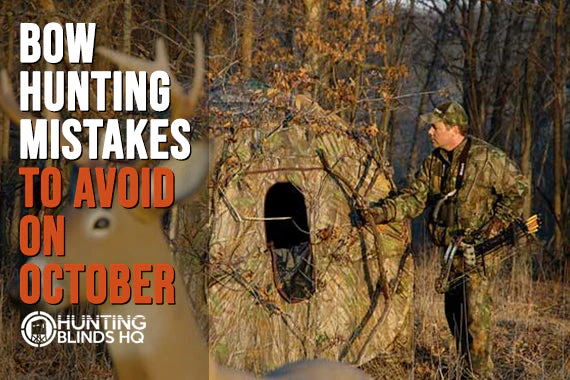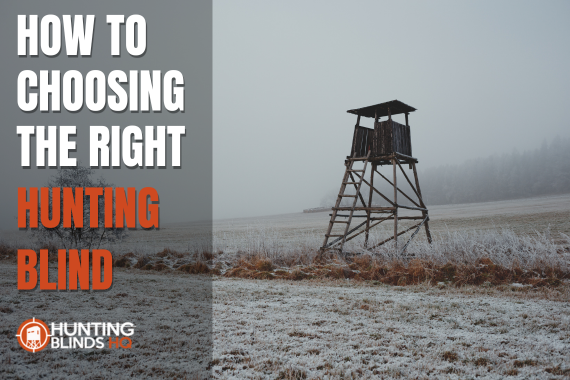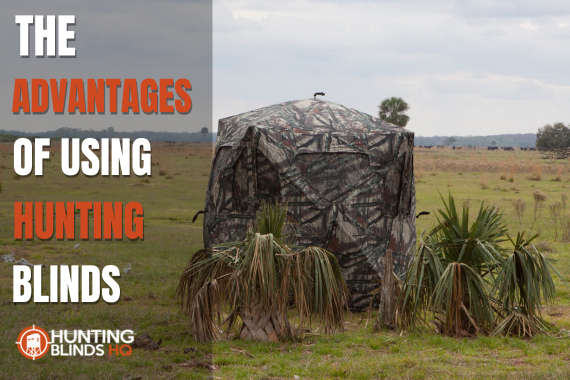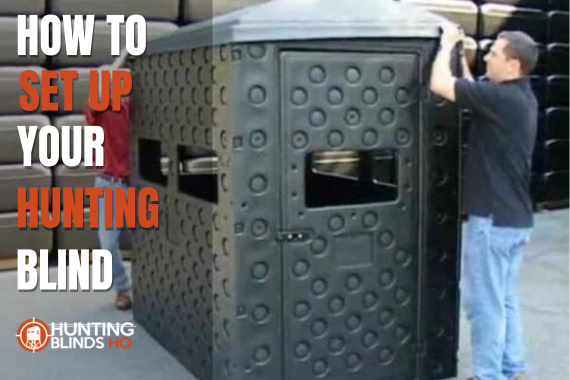
Blinds are much more advanced at concealment nowadays, and ground hunting blinds have been used for many years to hide from the trophy. They are a staple when archery hunting for turkeys or other specific species. Usually, bow hunters opted for a tree stand to achieve a better vantage point when approaching the game.
If you are trying your hand at archery hunting whitetails from a pop-up hunting blind, you should consider a few things. After choosing the right hunting spot, always make sure to avoid these mistakes when you're out hunting from ground blinds for deer hunting.
Concealed but Not Concealed
Quality hunting blinds manufactured today come in various camo patterns, blending in better than ever. However, many hunters think that this exterior camo is enough for concealment. The fact is that ground blinds are a large, visible object sitting in the woods. Their outline and footprint alone make them hard to conceal.
Brush in the ground blind for bow hunting where you have it positioned. 'Brushing in' refers to making the hunting blind part of the landscape. You may position it first against a natural backdrop like thick timber, heavy brush, or an edge. Next, use the surrounding vegetation to fold it into the habitat you're hunting. You can use leaves and tree branches to conceal your pop-up blind and break up its outline to approaching deer.
Do Not Forget About The Scent
Your scent is a significant factor when it comes to hunting blinds. Blinds produced from fabric can and will hold scent from you, your truck, or where you have stored it since last season. So, to avoid being winded, you not only have to make sure you are scent-free, but you also have to make sure your blinds are as well.
Even if you have tried to store your blind in an area with no heavy scents, you still want to air it outside before the upcoming season. Always check and make sure to clean off dirt that may hold odor with scent-free soaps, including your storage bag as well.
Hunting Right After Setting Up A Ground Blind
Don't let the time crawl and wait until the last minute to set up your hunting blind. Ideally, you can set up you're blind for more than a week to give deer time to adjust and become comfortable in your deployment area. Deers have a defined home range, a core area where they bed, feed, and move most of the time; setting up a ground blind for bow hunting only days before hunting is a major red flag for deer, so they know when something is up or odd in that area.
Sometimes, this is not an option. For instance, on public land, setting a deer hunting blind up early may lead to theft or damage from other hunters. Additionally, you may have to change areas during the season based on changing deer patterns, and you cannot wait days to hunt them. Also, do your best to brush in the blind to make it concealed and as natural as possible to keep it out of sight of others.
Pop-up Hunting Blinds on Deer Trails
The blind is no different than a tree stand when positioned correctly. Frequently, hunters want to be as close to a well-traveled deer trail as possible to make a bow shot. Avoid this temptation. Having your blind directly on a deer trail is a red flag for an approaching deer that something is not right, even with the best concealed, brushed-in hunting blinds.
Strategically positioning ground blinds for deer hunting perpendicular to a deer trail is a powerful tactic. This approach allows you to see deer approaching and be close enough for a shot, all while maintaining the element of surprise.
Substituting a Hunting Blind for Good Archery Tactics
Relying on a blind over basic archery hunting tactics is the most prominent mistake bow hunters make when hunting deer from a blind. The assumption is that the deer hunting ground blind will conceal all movements you may make, from moving to get an angle on a buck to drawing your bow. Deer can see into the ground blind at close distances. When hunting from a tree stand or an open ground set, your movements must be calculated. Trade out camo for black or dark clothing to better blend into the inside of the blind. Also, only opening enough window panels is necessary to see the right direction. Both of which can help conceal movement in the blind.
Understanding the limitations of hunting blinds is crucial. It's important not to assume that the only way to hunt from the ground is by using a blind, or that a blind works in every hunting situation. Open hunting spots can make the blinds more visible and may lend themselves to alternative solutions like pure ground hunting or a properly placed tree stand.
In conclusion, deer hunting from a ground blind is an excellent option for archery. It is a bit different than hunting from a tree stand. By avoiding these ground hunting blind mistakes, you can increase your chances of getting a buck from one of your hunting blinds this October.





















